Today’s Current Affairs: 30th October 2025 for UPSC IAS exams, State PSC exams, SSC CGL, State SSC, RRB, Railways, Banking Exam & IBPS, etc
Table of Contents
Atlas Moth:
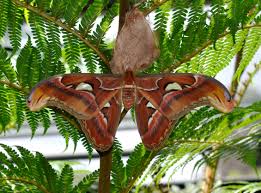
An ‘Atlas Moth’ (Attacus atlas), recognised as the world’s largest moth, has been recently discovered in Guddehalli in Karwar of Karnataka’s Davangare district.
- Atlas Moth is a massive saturniid moth native to tropical and subtropical rainforest regions of Southeast Asia.
- Scientific Name: Attacus atlas
- It is widely distributed in Southeast Asia, including in Nepal, northeastern India, Bangladesh, Bhutan, southeastern China, Laos, Cambodia, Vietnam, and Taiwan.
- It is primarily found in tropical and subtropical rainforests.
- They are cultivated in some areas for their silk called fagara, which is rough and woolly.
- It is one of the largest moths in the world, with a wingspan of over 9.8 inches.
- Their wingspans are also amongst the largest, reaching over 25 cm (10 in).
- Females are slightly larger than males.
- The wings of an atlas moth are a beautiful mix of brown, orange, white, and pink colors.
- They have clear, triangle-shaped “windows” on each wing. These windows look like they are made of glass.
- Like other moths in the family Saturniidae, adults do not have working mouthparts and only live for a few days to a week.
- Atlas moths lives only 14-18 days.
Hastinapur Wildlife Sanctuary:
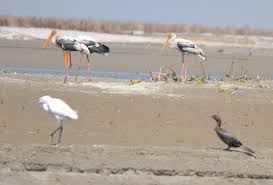
A forest department team has recently arrested four members of a gang allegedly involved in the illegal felling of khair trees in the Hastinapur Wildlife Sanctuary area.
- Hastinapur Wildlife Sanctuary is located in the Meerut District of Uttar Pradesh.
- Established in 1986, it lies alongside the northern tip of the River Ganga, flowing through the districts of Muzaffarnagar and Bijnor.
- It is situated near the mediaeval town of Hastinapur, which is of cultural importance.
- It is spread across an area of 2073 sq.km.
- It is made up of a variety of environments, including marshes, grasslands, woodlands, and riverine ecosystems.
- The Ganges River and its tributaries flow through the sanctuary, contributing to its rich biodiversity.
- The vegetation can be classified into tall wet grasslands, dry short grasslands, scrubs, and plantations.
- It is home to the state animal, the Swamp Deer (Barasingha), as well as Hog Deer, Cheetal, Sambar, and the State Bird, the Saaras (Crane).
- It is a part of the “Asia Flyway” project, and many migratory birds, both local and foreign, flock in numbers near the numerous water bodies present in the region.
- Under Crocodile Breeding Projects, baby crocodiles are released in the Ganga River near Hastinapur.
- Under the aegis of the World Wide Fund (WWF), the Turtle Rehabilitation Program also has its centre near the Hastinapur Sanctuary.
CLAMP Portal:

The Union Minister of Coal and Mines launched two digital platforms: the KOYLA SHAKTI Dashboard and the CLAMP Portal.
- The Coal Land Acquisition, Management, and Payment (CLAMP) portal is a unified digital solution.
- It is aimed at streamlining land acquisition, compensation, and rehabilitation & resettlement (R&R) processes in the coal sector.
- It serves as a centralized repository of land records, the portal ensures data integration, enhances accountability, and minimizes procedural delays.
- CLAMP portal enhances transparency, efficiency, and inter-agency coordination in land management practices across coal PSUs.
- Koyla Shakti Dashboard is a digital platform that integrates the entire coal value chain from mine to market on a unified interface.
- The platform facilitates real-time coordination among coal companies, railways, ports, and end users, thereby enhancing operational efficiency and ensuring seamless coal logistics.
- The platform acts as a comprehensive decision-support system, ensuring:
- Seamless coordination among coal companies, railways, ports, and end users.
- Transparency and accountability through data-driven monitoring.
- Faster, smarter decision-making enabled by live analytics and digital dashboards.
20th East Asia Summit:
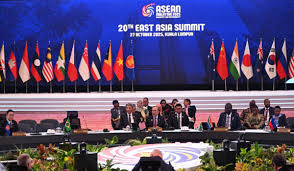
The 20th East Asia Summit has adopted the Kuala Lumpur Declaration.
- It is the premier Leaders-led forum for dialogue and cooperation on strategic, political, and economic issues of mutual interest and concern in the East Asia region.
- It was established in 2005 with the convening of the 1st Summit in Kuala Lumpur, Malaysia.
- Member countries: ASEAN Member States (Brunei, Cambodia, Indonesia, Laos, Malaysia, Myanmar, Philippines, Singapore, Thailand, and Vietnam), Australia, China, India, Japan, New Zealand, and the Republic of Korea, United States and Russia.
- To become a member of the EAS, countries must:
- Sign the ASEAN Treaty of Amity and Cooperation (TAC)
- Be a formal dialogue partner of ASEAN
- Have substantive cooperative relations with ASEAN
- Six priority areas of regional cooperation within the framework of the EAS
-
-
- Environment and Energy,
- Education,
- Finance,
- Global Health Issues and Pandemic Diseases,
- Natural Disaster Management, and
- ASEAN Connectivity.
-
Hemiphyllodactylus Venkatadri:
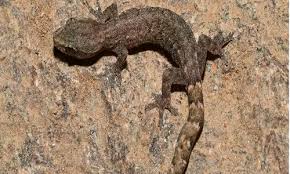
Scientists from the Zoological Survey of India (ZSI) have discovered a new species of slender gecko and named it as Hemiphyllodactylus Venkatadri.
- It is a new species of slender Gecko belonging to the genus Hemiphyllodactylus.
- It was discovered from Tirumala hill ranges within the Seshachalam biosphere reserve in Andhra Pradesh
- Seshachalam biosphere reserve is also known as Tirupati-Kadapa hills are one of the major landscapes of Eastern Ghats of Southern Andhra Pradesh.
- It was designated Biosphere Reserve in 2010.
- It derives its name from the sacred Venkatadri Hills.
- It is the second slender gecko species recorded from Andhra Pradesh, after Hemiphyllodactylus arakuensis.
- Venkatadri slender geckos are considered “small,” reaching just over 2 inches in length.
- Their limbs are short, and they have “spurs” at the base of their tails.
Transit Oriented Development:

Delhi Development Authority’s (DDA’s) East Delhi hub is set to roll out India’ first transit-oriented development (TOD) project.
- It is an urban development strategy which aims to create the maximum possible numbers of houses, shops, offices and recreational spaces near public transport facilities.
- The TOD approach puts public transportation at the centre of the urban development plan.
- Objectives is to minimise use of personal vehicles, make commutes shorter, and reduce the cost of transport and exposure to pollutants.
- Neighbourhoods built around a TOD strategy are built around at least one major transit node such as a metro station or other rail systems.
- Transfers between different modes of transport, such as switching from a metro to a city bus, should be a seamless process.
- TOD hubs should also have open public spaces such as transit plazas and parks to increase street activity and foster a sense of community.
- These localities must also be friendly to pedestrians and cyclists, since one of the major thrusts of this approach is to take vehicles off the road.
- TOD localities should be mixed-use, so that people can live, work, and relax within a small radius.
- Advantages of Transit Oriented Development:
- To transportation agencies, it offers an additional source of non-ticket revenue.
- For land-owning agencies and governments it appears as a mode of value-capture financing, which allows them to fund public projects through potential increases in land values resulting from these projects.
Samriddh Gram Phygital Services Pilot Project:
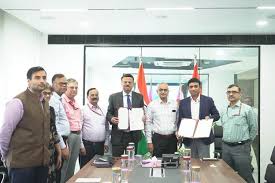
The Telecom Centres of Excellence (TCoE) has signed agreements with leading implementation partners to roll out the Samriddh Gram Phygital Services Pilot project.
- Samriddh Gram Phygital Services Pilot Project is aimed at transforming rural India through a seamless integration of physical and digital services.
- It is a pioneering phygital (physical + digital) Services model integrating on-ground presence with robust digital infrastructure to empower rural citizens.
- It leverages BharatNet connectivity to deliver essential services seamlessly and sustainably.
- Under this initiative three villages have been identified namely, Ari & Umri in Madhya Pradesh, Narakoduru in Andhra Pradesh, and Chaurawala in Uttar Pradesh.
- Each village will host a Samriddhi Kendra which will serve as an integrated digital service hub.
- The Samriddhi Kendras will deliver Education & Skilling: Smart classrooms, AR/VR-based learning, and digital skilling aligned with government schemes/initiatives, IoT-based soil testing, drone support, and smart irrigation systems etc
Indi and Puliyankudi Limes:
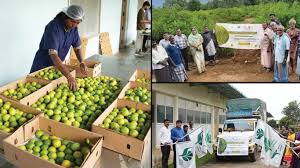
The Agricultural and Processed Food Products Export Development Authority (APEDA) has facilitated the first-ever air shipment of GI-tagged Indi Lime and Puliyankudi Lime to the United Kingdom.
- Indi Limes is cultivated primarily in Vijayapura district of Karnataka.
- It has received the Geographical Indication (GI) tag.
- It is known for its superior quality, zesty aroma, high juice yield and balanced acidity.
- It has distinctive flavour and geographical uniqueness make it a hallmark of the region’s agricultural excellence.
- Along with its culinary applications, the lime is also valued in traditional medicine and cultural practices.
- Puliyankudi Lime is extensive lime cultivated in Puliyankudi, often referred to as the “Lemon City of Tamil Nadu,”
- The Puliyankudi Lime, particularly the Kadayam variety, is characterised by its thin peel, strong acidity, high ascorbic acid content (34.3 mg/100g) and juice percentage of around 55%. It is rich in vitamin C and antioxidants.
- It supports immunity and digestion while offering exceptional flavour and quality.
- It has officially received Geographical Indication (GI) tag in April 2025.
Agricultural and Processed Food Products Export Development Authority
- It was established by the Government of India under the Agricultural and Processed Food Products Export Development Authority Act passed by the Parliament in December, 1985.
- Objective: To develop and promote the export of scheduled products.
- Nodal Ministry: It works under the Ministry of Commerce and Industry.
- Headquarters: New Delhi.
Saranda Wildlife Sanctuary:
The Supreme Court of India has reserved its verdict on the Jharkhand government’s plea to reduce the proposed Saranda Wildlife Sanctuary area from 310 sq km to 250 sq km, citing the need to protect tribal habitation and community rights. The Saranda Sanctuary is a proposed wildlife sanctuary in West Singhbhum district of Jharkhand, located within the Saranda Forest Division, known as one of Asia’s largest Sal (Shorea robusta) forests and a key biodiversity hotspot at the Jharkhand–Odisha border. Situated in southern Jharkhand, the Saranda region—meaning “land of seven hundred hills”—covers about 856 sq km, of which 816 sq km is reserved forest. It lies within the Singhbhum Elephant Reserve, forming a vital ecological corridor between Jharkhand, Odisha, and Chhattisgarh.
Special Intensive Revision 2025:
The Election Commission of India (ECI) will launch the Special Intensive Revision (SIR) 2025, requiring voters across 12 States and Union Territories. The Special Intensive Revision (SIR) 2025 is a large-scale, document-based voter verification exercise conducted by the Election Commission of India to update, authenticate, and purify electoral rolls after nearly two decades. It ensures that only eligible Indian citizens remain registered voters, aligning with the provisions of the Representation of the People Act, 1950.The drive is implemented by the Election Commission of India (ECI) under the supervision of Chief Election Commissioner Gyanesh Kumar.
JAI Strategy:
The Southern Command of the Indian Army has initiated the implementation of the Prime Minister’s “JAI Strategy” — Jointness, Atmanirbharta, and Innovation, aligning defence preparedness with the upcoming Tri-Services Exercise ‘Ex Trishul’.The JAI Strategy stands for Jointness, Atmanirbharta, and Innovation — a visionary framework introduced by Prime Minister to transform India’s defence ecosystem into a cohesive, self-reliant, and future-ready force.Aim is to integrate all three branches of the Armed Forces for seamless operational synergy, strengthen indigenous defence production, and embed innovation and technology into India’s military doctrine.
India Withdraws from Ayni Airbase:
India has officially concluded its presence at Tajikistan’s Ayni Airbase , ending a strategic chapter in Central Asia.The collaboration, initiated four years ago to revitalize the Soviet-era base, saw its end after a bilateral agreement on stationing Indian personnel at the location ended in 2022.
The base’s strategic utility expired after the collapse of India’s ally, the Northern Alliance, in Afghanistan and Taliban’s takeover of Afghanistan in 2021. Ayni Airbase is located about 10 km west of Dushanbe, Tajikistan’s capital.
RBI Gold Reserves Surpass USD 100 Billion:
The Reserve Bank of India (RBI) has stepped up its gold repatriation efforts, bringing back nearly 64 tonnes of gold from abroad between April and September 2025, raising India’s gold reserves to USD 108 billion.Over the past decade, India saw its gold share in foreign exchange reserves almost double from less than 7% to nearly 15%. As of September 2025, the RBI held 880.8 tonnes of gold — 575.8 tonnes in India, 290.3 tonnes abroad (Bank of England & Bank for International Settlements), and 14 tonnes as deposits.
Supplemental Nutrition Assistance Program (SNAP):
Millions of Americans will lose Supplemental Nutrition Assistance Program (SNAP) benefits as the US government halts aid amid funding shortages and policy shifts.SNAP is the largest US food aid program, offering reloadable debit cards for grocery purchases in supermarkets and online platforms. Over 40 million people depend on SNAP. India also has social safety net initiatives such as Public Distribution System (PDS) for subsidized food grains and Poshan Abhiyan for improving nutrition among women and children.PDS ensures food security by supplying essential foodgrains (e.g., wheat, rice, coarse grains) to vulnerable sections at subsidized prices.It operates under the National Food Security Act (NFSA), 2013, covering nearly two-thirds of India’s population as per the 2011 Census.




